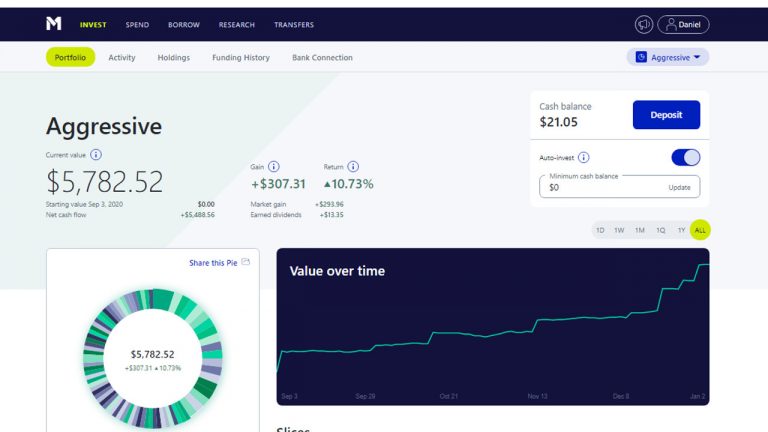When you are in your 20s and 30s, it can be a bit daunting to select one of the many types of retirement accounts.
There are a ton of terms that are hard to understand for some people, such as “IRA” and “401(k).” It just feels like random letters and numbers, but the truth is that knowing the meaning behind these terms is crucial when it comes to preparing for retirement.
Although it can be a lot to process at first glance, we put together a guide to help make it easier to understand the types of retirement accounts. Choosing and understanding your retirement accounts is crucial for being prepared for when you retire.
Each type of retirement account has differences in how they work and how you can access your money. For some, you may be required to pay a small fee to the government whenever you try to withdraw money. Others can let you enjoy tax-free withdrawals.
In many cases, you won’t have an option if your retirement account is provided by an employer. However, it is important to understand how they work and if you need a supplemental retirement account.
Let’s start exploring each type of retirement account and find out the best option for you and your family.
Primary Categories: 401(k)s and IRAs
There are two main types of retirement accounts, which are the IRA and the 401(k). They each have crucial differences, making them better suited for different people and different use cases.
In general, these are some similarities between an IRA and a 401(k).
- Both retirement account types can help you save funds for the future.
- They also allow you to contribute continuously from your paycheck or additional contributions.
- It’s possible to invest these savings in the stock market. This helps you grow your retirement funds by using an investing strategy that fits your needs and risk level.
- Both provide tax benefits, although they function differently.
Now that we have gone over some of the similarities, let’s get into the specifics of different retirement accounts.
Traditional 401(k) Retirement Plan
Traditional 401k retirement accounts are the most common retirement account that for-profit employers offer. These accounts are meant to help you save money for retirement, and it’s the standard retirement account type in most workplaces.
401k plans let employees contribute pre-tax, meaning that it reduces their taxable income. Taxes are paid on distributions when you retire, so it is considered a tax-deferred retirement plan.
The benefit of the 401(k) is that the funds you hold there will grow on a tax-deferred basis. You won’t be required to pay any taxes upfront, but you will once you retire and want to withdraw money.
You can also choose how to contribute to the 401(k) retirement account plan. For instance, you could choose to contribute a particular percentage of your monthly income or salary. Another option is to choose an individual dollar amount to contribute.
The funds that you contribute to your 401k can be invested through a range of investments that are controlled by your employer. While you can choose from a variety of funds and stocks, there are usually some limitations on what you can invest in.
In an emergency, it is also possible to take out a 401(k) loan that is backed by your retirement account.
Roth 401(k) Retirement Plan
A Roth 401(k) has one major difference from a traditional 401(k), which is that contributions are not tax-deferred. This means that contributions are made initially with after-tax money and it does not reduce your current tax burden.
However, the benefit is that the interest you earn on your investment is tax-free. This lets your money grow tax-free for decades without needing to pay taxes like normal investments.
One thing to consider is that, if your company puts money into that account, it will be tax-deferred. Their contributions are pre-tax and you will be obligated to pay taxes on that side.
401k Contribution Limits
For both traditional and Roth 401(k) plans, it is possible to add up to $19,500 into these accounts each year. This limit is increased up to $26,000, if you are older than the age of fifty.
For 401(k) accounts, you will be able to withdraw money when you reach the age of 59 and 1/2 without penalty. Early withdrawal before that age will incur a 10% penalty fee on top of your normal income tax.
Be aware that you are required to take a minimum amount of money from your retirement accounts once you hit the age of 72. This is known as the required minimum distribution, or RMD.
403(b) Retirement Plans
A 403(b) retirement account is very similar to a 401(k) account but is made for non-profit companies. They are for tax-exempt organizations like public schools and non-profit organizations. A 403(b) can also be called a tax-sheltered annuity, or a TSA retirement plan.
Individual Retirement Arrangements (IRA)
Individual Retirement Arrangements, or IRAs, differ from 401ks in the fact that they are primarily for individuals, not employers. If you are an individual looking to open a retirement account, you’ll want to use an IRA.
IRAs will grant you some tax benefits and you can save funds for retirement separately from your workplace. Many people prefer IRAs because you have greater freedom in choosing how to invest your funds. For example, you can choose from real estate, annuities, funds, or individual stocks and bonds.
Like 401(k)s, there are two sub-types of IRAs, traditional and Roth. Before we get into the differences, here are the contribution limits per year.
IRA Contribution Limits
The contribution limit is currently $6,000 per year, although it is possible to put money into an IRA at any age. That limit increases up to $7,000 per year if you’re older than 50. The contribution limits do change periodically with time, so you can check the IRS website for the latest information.
The good news is that you can take money out of your IRA at any time but it does come at a cost. Taking money out of your IRA before age 59 and 1/2 will cost you a penalty of 10% on top of your taxable income.
Traditional IRAs
Traditional IRAs work very similar to traditional 401(k)s in that the investment grows tax-deferred. You will use pre-tax contributions that help to reduce your taxable income. You are only required to pay taxes when you withdraw money at retirement age.
Another point to consider is that you must start to take minimum distributions once you hit the age of 72. This means you aren’t able to store your money indefinitely in an IRA.
However, one huge advantage of traditional IRAs is that you can put money into your account regardless of how much money you make yearly.
Roth IRAs
Roth IRAs are another option to contribute with after-tax dollars. They have become a great option for individuals to grow their retirement savings on their own.
Roth IRAs use after-tax dollars. Therefore, you don’t have to worry about taxes in the future when you try to withdraw money. Your money will grow tax-free and you won’t have to pay taxes with you withdraw it.
However, these accounts have drawbacks you should take into consideration before applying for one. For starters, if you earn too much, you will not be able to put money on the Roth IRA.
The 2021 modified adjusted grow income (MAGI) limit is $140,000 for a single person. The limit is a bit higher for married couples, which is $208,000 for 2021.
SIMPLE IRA Plan
A SIMPLE IRA stands for Savings Incentive Match Plan for Employees. The SIMPLE IRA is primarily for small businesses that have 100 employees or less. It is also an easy way to start a retirement plan with less hassle.
They also allow for an employer matching contribution, provided that the employee contributes the minimum. Any employer match is 100% vested right away.
SIMPLE IRAs are similar to traditional IRAs since they are tax-deferred. You also won’t pay taxes until you take a distribution. The main difference is that the contribution limit is higher at $13,500 but they otherwise function the same as a traditional IRA.
Simplified Employee Pension (SEP) Plan
A Simplified Employee Pension plan, or SEP, is a retirement account set up by the employer. Only the employer contributes and the money is invested into traditional IRAs, otherwise known as a SEP-IRA. The employee is always 100% vested in a SEP plan and it is available to any size employer.
Payroll Deduction IRA
A payroll deduction IRA is a retirement account that allows employers to automatically deduct contributions from their payroll. They can choose to invest in either a traditional or Roth IRA and any business, including self-employed people, can set one up.
Choosing a Retirement Account
Employers usually don’t give an option for picking your type of retirement account. Your company will either provide a 401(k), 403(b), or an IRA retirement account. This often depends on the size and type of company.
No matter which type is available to you, take advantage of the tax benefits by contributing as much as you can. A good target is to save 15% of your income and make sure you take advantage of any employer match.
Opening and contributing to another IRA is a good way to continue to grow your retirement savings. If you think you will earn more money through your career, a Roth IRA can help to avoid taxes when you retire. You’ll have to pay taxes upfront when you contribute, but disbursements will be tax-free.
There are many factors that go into choosing the right retirement account but they will all have benefits to help you build your wealth. Start saving for retirement today by consistently contributing to an IRA or 401k.













